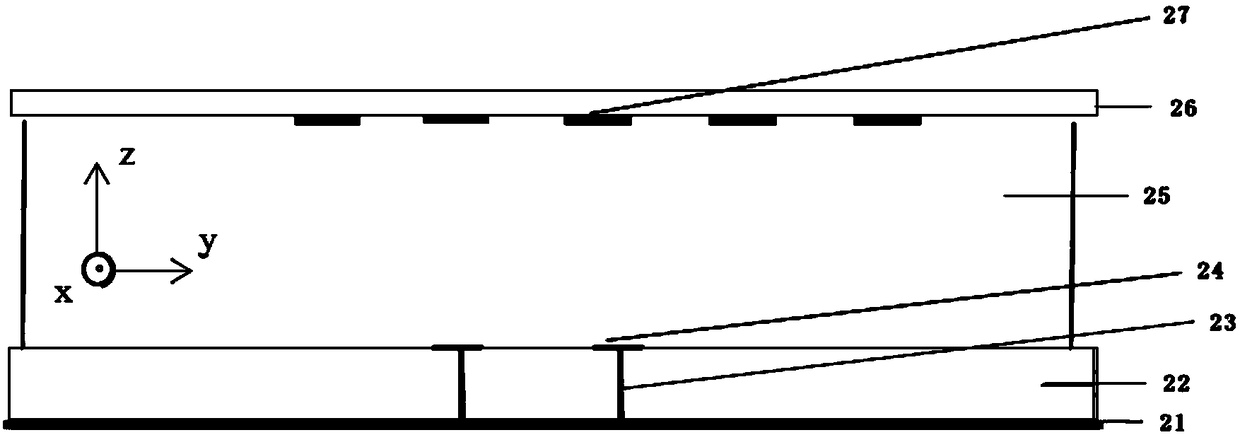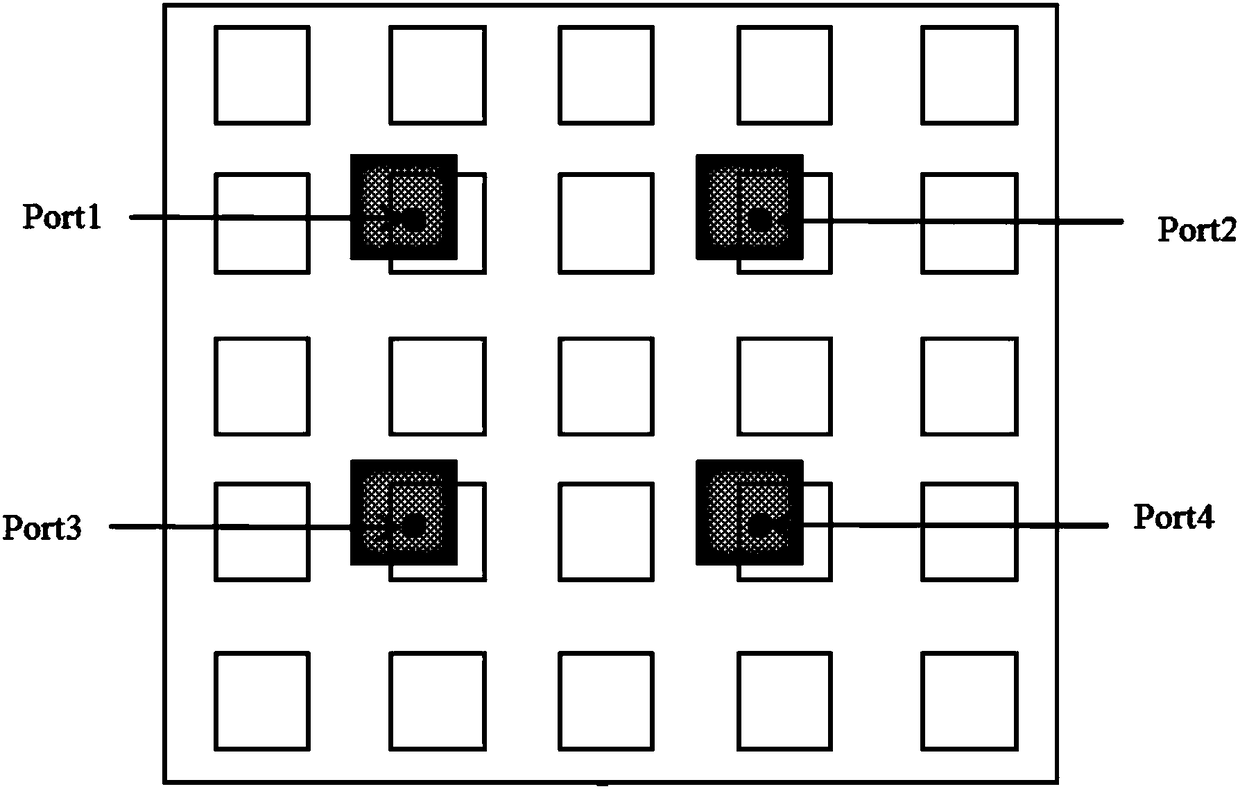F-P cavity based MIMO (Multiple-Input Multiple-Output) antenna
An F-P and antenna technology, applied in the field of MIMO antennas, can solve the problems of large feeder network loss, large antenna array size, and difficult processing and implementation, and achieve large gains, full utilization, and large-scale effects.
- Summary
- Abstract
- Description
- Claims
- Application Information
AI Technical Summary
Problems solved by technology
Method used
Image
Examples
Embodiment 1
[0031] Such as figure 1 As shown, it proposes a MIMO antenna based on an F-P cavity, and the antenna includes the following structure: a metal floor 11 , multiple excitation sources 12 , a dielectric cavity 13 , and a partially reflecting surface (Partically reflecting surface, PRS) 14 . In the structure, the dielectric cavity 13 is located between the metal floor 11 and the partially reflective surface 14, and constitutes an F-P resonant cavity structure. Multiple excitation sources 12 are placed in the medium cavity 13 between the partially reflective surface 14 and the metal floor 11 . In this way, multiple excitation sources 12 form multiple excitation ports of the MIMO antenna, thereby forming a multi-port MIMO antenna, so that the same F-P resonant cavity can be used to improve the gain of all port excitation antennas, wherein each of the multiple excitation sources 12 An excitation source may consist of a single single-polarized or dual-polarized antenna or a single-po...
Embodiment 2
[0036] Such as Figure 2(a) , 2(b)As shown in , it shows a MIMO antenna based on F-P cavity. Figure 2(a) is a side view of the antenna structure, wherein the antenna unit includes: a metal floor 21, a bottom dielectric substrate 22, a metal via hole and a coaxial feed port 23, a metal radiation patch 24, a dielectric cavity 25, The upper dielectric plate 26 and the periodic metal patch 27, the upper dielectric plate 26 and the periodic metal patch 27 together form a partially reflective surface (Partically Reflective Surface, PRS). Among them, the metal floor 21 and the bottom dielectric substrate 22 are located at the lower part of the F-P oscillation cavity, and the partial reflection surface composed of the upper dielectric plate 26 and the periodic metal patch structure is located at the upper part of the F-P oscillation cavity. The three together constitute the F-P oscillation cavity. The plurality of metal radiation patches 24 are arranged inside the dielectric cavity ...
Embodiment 3
[0045] In the second embodiment, the metal radiation patch exists as an excitation source in the form of a single-polarized antenna. In this embodiment, the excitation form is changed from a single-polarized antenna to a dipole without increasing the size of the antenna. antenna. As shown in Figure 5(a) and Figure 5(b), on the basis of Embodiment 2, each excitation antenna in this embodiment has changed from a single-polarized antenna to a dual-polarized antenna, so that there is no need to increase the number of antennas Under the premise of reducing the size, the number of MIMO ports can be doubled, and at the same time, each port has higher gain and better isolation.
[0046] Figure 5(a) is a side view of the antenna structure, wherein the antenna unit includes: a metal floor 31, a bottom dielectric substrate 32, a metal via hole and a coaxial feed port 33, a metal radiation patch 34, a dielectric cavity 35, The upper dielectric plate 36 and the periodic metal patch 37, th...
PUM
 Login to View More
Login to View More Abstract
Description
Claims
Application Information
 Login to View More
Login to View More - R&D
- Intellectual Property
- Life Sciences
- Materials
- Tech Scout
- Unparalleled Data Quality
- Higher Quality Content
- 60% Fewer Hallucinations
Browse by: Latest US Patents, China's latest patents, Technical Efficacy Thesaurus, Application Domain, Technology Topic, Popular Technical Reports.
© 2025 PatSnap. All rights reserved.Legal|Privacy policy|Modern Slavery Act Transparency Statement|Sitemap|About US| Contact US: help@patsnap.com



